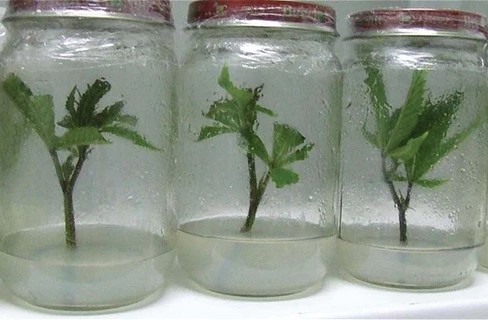
Tissue culture cloning, also known as micropropagation, is an advanced technique used to produce large quantities of genetically identical plants from a small piece of plant tissue. While it may sound complex, beginners can also delve into this fascinating world of plant propagation with some basic knowledge and the right supplies. In this article, we will walk you through the essential supplies needed for tissue culture cloning and an easy project for beginners to get started.
Essential Supplies for Tissue Culture Cloning
Sterile Work Area
Create a clean and sterile workspace to prevent contamination during the tissue culture process. A laminar flow hood is ideal, but a clean, well-ventilated room with minimal air movement will suffice for small-scale projects.
Growth Medium
Prepare a nutrient-rich growth medium suitable for the plant species you wish to clone. The medium typically contains a combination of agar, sugars, minerals, and vitamins to support plant growth. Read this article for more information on how to prepare a plant tissue culture grow medium.
Plant Hormones
You will need plant growth hormones, such as auxins and cytokinins, to stimulate tissue growth and the development of roots and shoots.
Sterile Containers
Use sterile containers, such as test tubes, flasks, or petri dishes, to culture the plant tissues.
Scalpel or Razor Blade
A sharp, sterile cutting tool is essential for taking tissue samples from the mother plant.
Disinfectants
Prepare a solution of bleach or ethanol to sterilize your equipment and work area.
Plant Material
Choose healthy and disease-free plant material from the parent plant. This can be a shoot tip, node, or small section of stem, depending on the species.
Labels
Keep track of your samples by labeling each container with the plant species and any relevant information.
Easy Project for Beginners: Tissue Culture Cloning of a Houseplant
For beginners, starting with a common houseplant is a great way to get familiar with tissue culture cloning. Spider plants (Chlorophytum comosum) are excellent candidates due to their ease of propagation and quick growth.
Step-by-Step Procedure
Sterilize Equipment
Thoroughly clean and sterilize all equipment, including the containers, scalpel, and any other tools you will be using.
Prepare Growth Medium
Follow a pre-formulated recipe or purchase a commercial tissue culture medium suitable for spider plants.
Take Plant Sample
Using a sterile scalpel or razor blade, take a small shoot tip or node from the spider plant. Make sure the plant material is clean and free from pests or diseases.
Culturing
Place the plant sample in a sterile container with the prepared growth medium. Seal the container to create a sterile environment.
Incubation
Store the container in a warm and well-lit area, away from direct sunlight. Maintain a temperature of around 70°F to 80°F.
Shoot Development
After a few weeks, you should see small plantlets forming on the surface of the growth medium.
Transfer to Soil
When the plantlets have developed roots and several leaves, carefully transfer them to individual pots filled with potting soil.
Acclimatization
Keep the newly propagated spider plants in a warm and humid environment initially, gradually acclimatizing them to normal room conditions.
Conclusion
Tissue culture cloning is a fascinating technique that allows plant enthusiasts to propagate many identical plants from a single tissue sample. For beginners, starting with an easy project like cloning spider plants using tissue culture can be a rewarding and educational experience. With the right supplies and a sterile workspace, you can successfully master the basics of tissue culture cloning and open the door to a world of plant propagation possibilities.
Related Articles & Free Email Newsletter Sign Up
DIY Seed Starting Ideas for Any Time of Year
How Rooting Compounds Work and Why You Need Them
How to Select the Perfect Donor Plant for Successful Propagation


Comment here